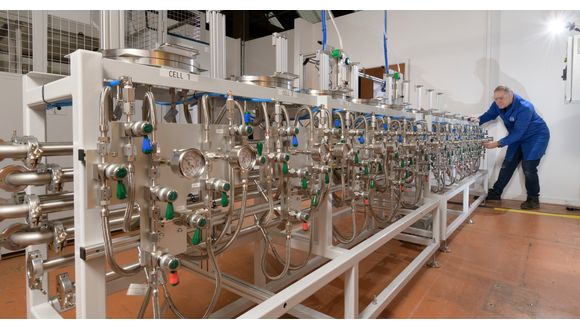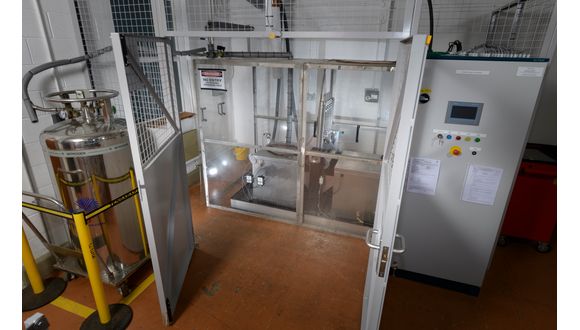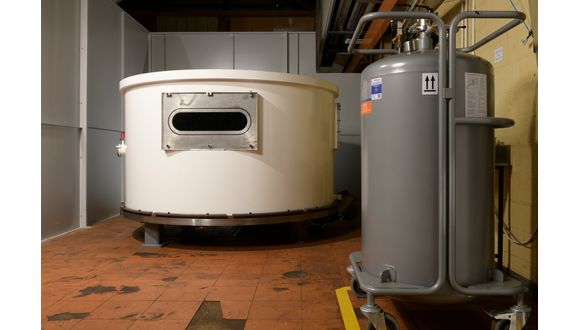Tue, 24 November, 2020
Over the last two years TWI and Stratospheric Platforms Limited (SPL) have been working together to support the future of hydrogen powered flight as an enabler to delivering 4G and 5G coverage. This will allow better connectivity to rural and greenfield sites than the existing terrestrial masts are currently able to deliver.
These aircraft will store liquid hydrogen on-board for the fuel cell power system. For the last two years, TWI and SPL have worked together to design, commission and run equipment to in order to study the potential materials that will be used in the liquid hydrogen storage system. These layered composite materials need to not only contain the liquid hydrogen, but also to withstand the thermal cycling associated with the repeated refilling of the storage tanks.
Hydrogen is the smallest element and, because of this, it presents challenges during storage. In order to understand the potential losses of hydrogen, it is important to understand the permeation properties of the vessel material, especially where there are joins, repairs and/or damage. SPL have designed and commissioned a permeation rig that is operated at TWI. Hydrogen also presents safety challenges as it is explosive when mixed with oxygen, although TWI has many years’ experience working with hydrogen gas, it was decided that the permeation rig would use helium, the second smallest element. Specimens are supplied with helium on one side while the other side is held at a high vacuum. An extremely sensitive helium detector is used to sniff out how much helium has permeated through specimens after an extended exposure. The rig has been designed to allow up to ten specimens to be tested at once and has allowed comparison of different layered materials.

The next challenge for the materials is the range of extreme temperature expected in service. When a storage vessel is full of liquid hydrogen its temperature will be a chilly -252°C, but when it is empty it will be at ambient temperature, which could be well above a standard room temperature on a sunny day. Storage vessels will therefore be subjected to thermal cycling over this temperature range during their lifetime. It is important to understand whether the material is damaged during this thermal cycling, particularly with a layered system where the different component parts may have differing coefficients of thermal expansion.
TWI has therefore designed and commissioned a test facility that performs thermal cycling over a wide range of temperatures. This facility allows specimens to be cooled to -196°C in a liquid nitrogen bath and then immerses them in hot water at +70°C. The rig then automatically cycles the specimens between these two extreme temperatures for as many cycles as is desired. SPL have been able to test their specimens, up to ten at a time, using this facility to help understand whether their materials are damaged by such thermal cycling.

Once materials have been selected, prototype storage vessels will need to be manufactured and tested. These vessels will need to be checked for both leakage and thermal stability. TWI is in the process of commissioning a test facility to allow these storage vessels to be put through their paces. TWI and SPL look forward to continuing to work together in this exciting and challenging area of technology.
